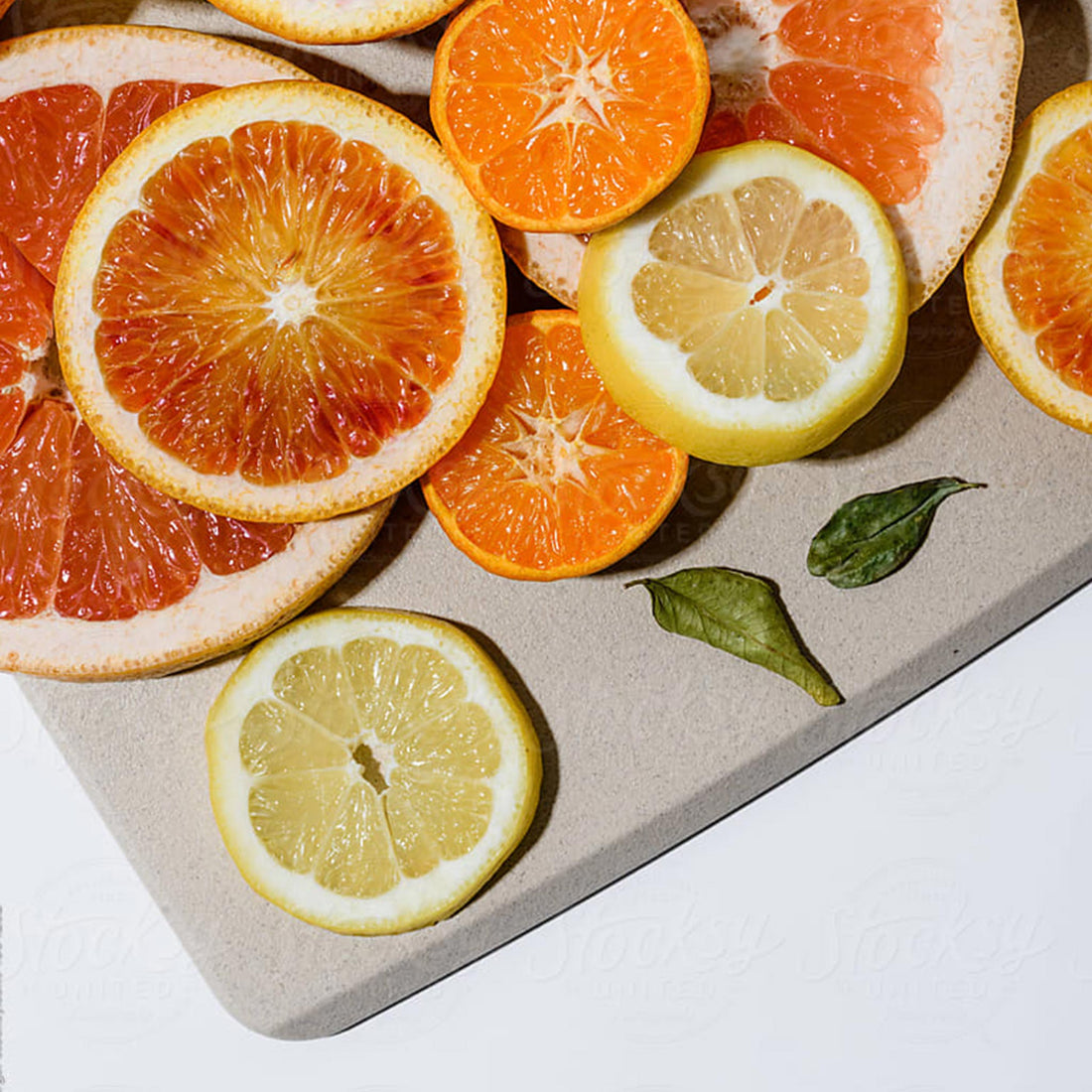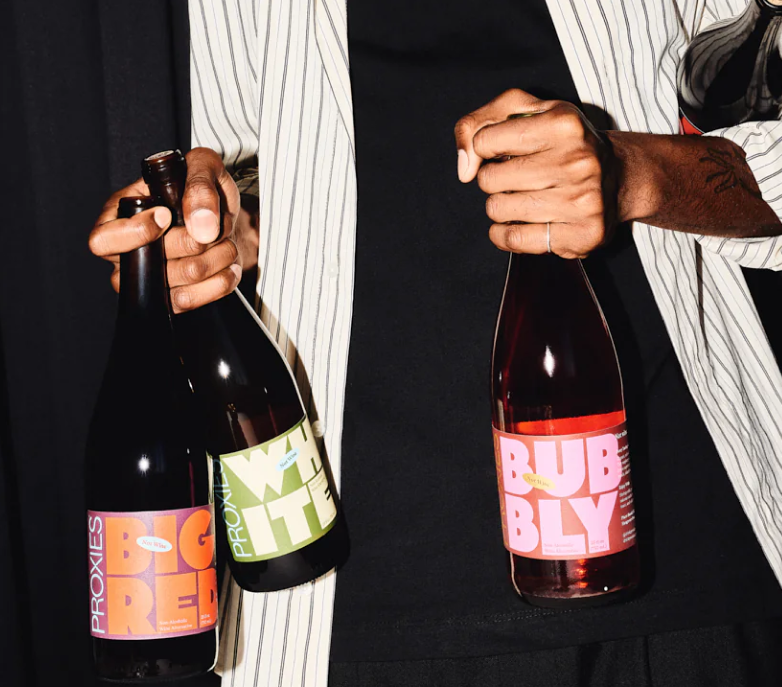
Original Citrus
Share
The citrus family is a kaleidoscope of color, shape and flavor. From acidic lemons and limes to sweet tangerines, tiny kumquats to soccer-ball-sized pomelos, each citrus fruit has its own distinct appearance, flavor profiles, culinary uses and global traditions.
If you’re anything like us, you’ve snacked on your share of tangerines, squeezed lemon juice over all manner of dishes, and parked lime segments atop more than one end-of-day cocktail.
What you might not have known is that none of these staple species originally existed in nature. The same goes for the vast majority of the other citrus strains currently found worldwide—which currently number in the hundreds.
Nearly all modern, commercially-available citrus fruits are hybrids, either man-made or naturally occurring, of just three species: The mandarin orange, the citron, and the pomelo.
(Worth noting: A couple other citrus fruits are regarded as potential “original” citrus species, including the kumquat and the papeda, though they haven’t had as strong of a genetic influence on modern species.)

Depending on where you’re located, you may not always be able to find these mother fruits on store shelves—but you can taste their influence from virtually anywhere in the world.
Here’s a rundown of the three original citrus fruits—and how their offspring made their way into our new family of citrus-forward Proxies.

CITRON
The literal granddaddy of all lemons, the citron resembles a bumpier, knobbier version of the yellow fruit we’ve all come to know and love.
Author Helena Attlee, who traced the origins of citrus fruit in Italy in her book The Land Where Lemons Grow, described the citron in this evocative manner: “It looks like the beginning of an idea about fruit, a rough prototype made at an early stage of the design process, a crude unfinished thing, a dinosaur that evaded extinction.”
Some modern cultivars of the citron are even more striking—like the Buddha’s Hand, a many-fingered version that looks less like a fruit and more like a tentacled deep-sea creature. (You might be able to find this wacky-looking item in specialty grocery stores, depending on your location and the season.)
Slice open a citron of any stripe, and you’ll likely find more white pith than actual fruit inside. But that hasn’t turned off the dozens of cultures around the Mediterranean and Middle East who have found a wide range of culinary uses for the rind: Jam in Iran, candied peel in Greece and Italy, and various sweet or spicy pickles and preserves around India.
In North America, you might even find citron peel in your next holiday fruitcake. They also have a ceremonial use in Judaism, as the fruit is one of four species of plants traditionally used during the celebration of Sukkot.
Some enterprising distillers and bartenders have also embraced the Buddha’s Hand as the star ingredient in vodka (like the version produced by Hangar One) or in a number of cocktail recipes.
But odds are, you’re more likely to find the citron’s at your local grocer than the original. Modern lemons are descendants of the citron and the bitter orange (which is itself a cross between the pomelo and the mandarin).
The lime, meanwhile, is a hybrid of the citron and the papeda, which was then crossed with a lemon to create the varieties of lime now found in North America.
IN PROXIES
Zest is our celebration of the lemon, with the fruit’s bold, mouthwatering acidity taking the lead and a hearty dose of zested peel bringing a complex, lightly-bitter edge. Honeysuckle, peach, and a hint of vanilla offer balance and a rich, lingering finish.

POMELO
These behemoths loom large in the culinary world. And we mean that literally; Even after thousands of years of crossbreeding, no other citrus species has been able to top the pomelo for sheer heft. (Little wonder its scientific name is Citrus maxima.)
Pomelo skins can be anywhere from deep green to light yellow, with insides that range from white to peachy orange to deep pink. Many are round; other ornamental varieties are pear-shaped.
Pomelos figure prominently in many holiday celebrations around southeast Asia. During Lunar New Year celebrations in China, they’re popular as a snack and as a gift (you may even see them sold prewrapped in festive red paper). In Vietnamese culture, pomelos are often a key part of the traditional five-fruit tray during Tet.
Throughout the year, you might also see pomelos in desserts (like Hong Kong’s popular mango pomelo sago) or salads (goi buoi in Vietnam and yum som-o in Thailand). As with the citron, the pith also has culinary uses, like slow-braising to create a classic Cantonese dish.
The pomelo’s influence can be most clearly seen in the sweet orange (a pomelo-mandarin hybrid), which was then backcrossed with the pomelo to create that other mammoth of the citrus world, the grapefruit.
IN PROXIES
Supreme gets its name from the culinary practice of carefully slicing off the pith of a citrus fruit and cutting it into segments. Fancy, sure, but we think popping the cork on this grapefruit-forward blend is way less headache-inducing. Bold, pithy citrus notes are accented by tropical kiwi, herbaceous angelica, and a hint of rose on the finish to make for an energetic and mouthwatering white.

MANDARIN ORANGE
The orange is a staple citrus species in North America—heck, the English language named a whole color after it. But it wouldn’t exist without its pocket-sized parent, the mandarin orange.
The mandarin actually started off as a bitter fruit; modern versions are actually hybridized with pomelos for that addictive sweetness. Nowadays, estimates put the number of mandarin sub-strains at around 200, with its descendants including tangerines, clementines and satsumas.
Another naturally-occurring cross produced the sweet orange, with the pomelo’s influence lending it a larger size and firmer texture. The sweet orange then gave way to countless other citrus fruits—including the bergamot, which lends its signature perfume-y flavor to Earl Grey tea.
Portable and quick-peeling, mandarins are a popular snack around the world—but they also play a starring role in numerous cultural traditions. Like the pomelo, mandarins are popular gifts and treats during Lunar New Year traditions in China; they’re also popular as snacks and stocking stuffers during Christmas celebrations in North America and the U.K., along with Epiphany celebrations in Italy.
Though the mandarin’s soft-skinned, sweet fruit lends itself more naturally to eating straight-up, you can find them in desserts or in salads (both the green, leafy kind and the marshmallow-laden Southern potluck variety).
IN PROXIES
We should probably take a moment to thank the mandarin for—indirectly—giving us the Creamsicle. We paid tribute to the classic iced treat, and its nostalgic orange-vanilla flavor combo, with Clementine, a blend of juicy tangerine, apricot, pineapple, and pinot blanc grapes accented with rich, bergamot-laced Earl Grey Cream Tea and complex star anise and sandalwood.
Zest, Supreme and Creamsicle were available in April/March 2022. Join the Proxies Club today for our newest creations.





